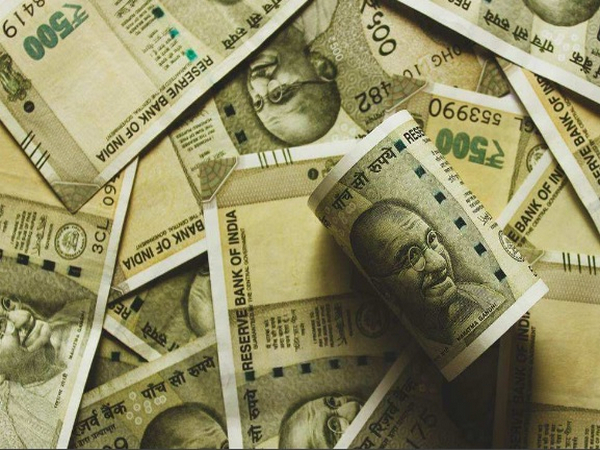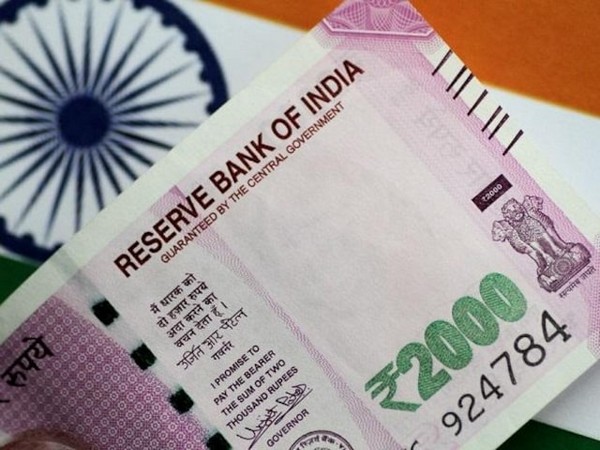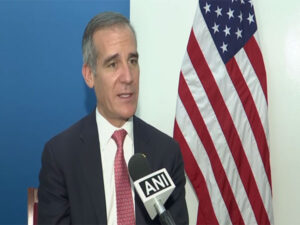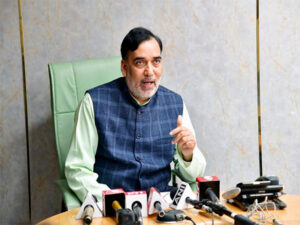
New Delhi [India], September 26 (ANI): Continuing with the depreciation, Rupee slipped further from the past week’s low and hit another lifetime low on Monday morning. This consistent depreciation follows the ongoing strengthening of the US dollar index for a two-decade, on hopes that demand for safe-haven currency such as the dollar would pick up.
This morning, it crossed 81.50 against the US dollar. On Friday, it closed at 81.25. Notably, last Thursday’s depreciation was the biggest single-day fall for the rupee since February 24. The latest monetary policy tightening by the US Federal Reserve also lent support to the dollar, thereby weakening other major currencies globally, including India’s rupee. “The panic is created by the dollar index which witnesses strong buying as a strong hedge against interest rate hikes and inflation cycle.
The rupee downtrend will continue as long as positive triggers are not witnessed from the inflation forefront. The next trigger for the rupee next week is the RBI policy which shall provide some respite to the rupee fall. Rupee range can be seen between 80.50-81.55 before RBI policy,” said Jateen Trivedi, VP Research Analyst at LKP Securities. For the record, the US Federal Reserve had raised the repo rate by 75 basis points — which is the third consecutive hike of the same magnitude, in line with expectations, which essentially means that investors will move towards the US markets for better and stable returns amid the monetary policy tightening. The Fed also hinted that more rate hikes were coming and that these rates would stay elevated until 2024.
The US central bank seeks to achieve maximum employment and inflation at the rate of 2 per cent over the long run and it anticipates that the ongoing hikes in the target range will be appropriate. Raising interest rates is a monetary policy instrument that typically helps suppress demand in the economy, thereby helping the inflation rate decline.
Consumer inflation in the US though declined marginally in August to 8.3 per cent from 8.5 per cent in July but is way above the 2 per cent goal. Meanwhile, India’s forex reserves are at a two-year low. The reserves have dropped by almost USD 80 billion since the escalation of the Russia-Ukraine tensions into war earlier this year
India’s forex reserves have been consistently depleting for the past few months because of RBI’s likely intervention in the market to defend the depreciating rupee and for the country’s trade settlement. This depletion is yet another possible reason the rupee has been weakening. Typically, the RBI intervenes in the market through liquidity management, including through the selling of dollars, with a view to preventing a steep depreciation in the rupee. A depreciation in the rupee typically makes imported items costlier.
For fresh cues, investors await RBI’s upcoming monetary policy outcome. As per schedule, the next three-day monetary policy meeting will be held during September 28-30. (ANI)
Much of Rupee’s weakness linked to strong US dollar index: SBI Research

Much of the weakness in the rupee is on account of a strong US dollar index and not just because of India’s domestic economic fundamentals, said SBI Research in its latest report. The rupee has been steadily and consistently depreciating as it touched yet another lifetime low on Friday morning after the US dollar index strengthened to a two-decade high this week.
The Rupee opened 25 paise lower from the previous session to touch a record low of 81.09 versus the US dollar on Friday, against Thursday’s close of 80.86. Notably, Thursday’s depreciation was the biggest single-day fall for the rupee since February 24. “The Indian rupee (INR) depreciated by a modest 7 per cent vis-a-vis the US dollar since the war broke out. The US dollar Index has appreciated by 15 per cent during the same period,” SBI Research said.
There have been instances in the past which showed that rupee depreciation has been much more than the appreciation of the Dollar, which had happened because of weak domestic macroeconomic fundamentals, it added. The rupee lingered below 80 per dollar in the recent past as RBI seemed to have protected it from crossing the psychological benchmark of 80 per dollar and also keep its volatility under control. “However, after the recent Fed rate hike by another 75 bps and dot plot indicating the possibility of the terminal rate of around 5 per cent, the rupee has depreciated crossing the 80 per dollar mark,” the report said.
On repo rate, the report said it should go up to 5.8- 6.0 per cent if the government targets a fiscal deficit of 4.5 per cent of GDP. “Another important result of our study is that the key rate of interest set by the RBI is not much affected by the fiscal deficit target. This is because in the case of India the key terminal rate depends more on inflation and the liquidity situation in the country,” it added. A fiscal deficit impacts the rate of interest indirectly by influencing inflation and liquidity dynamics. (ANI)

















